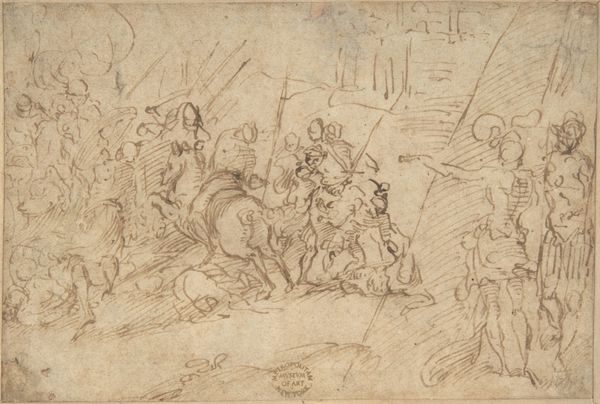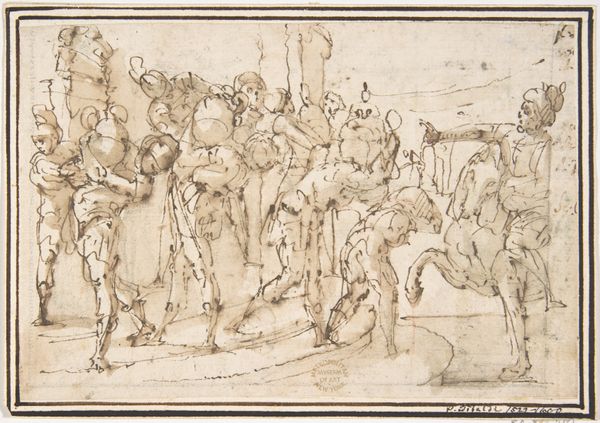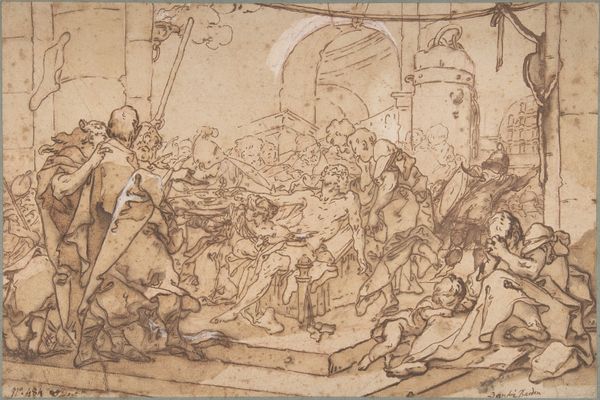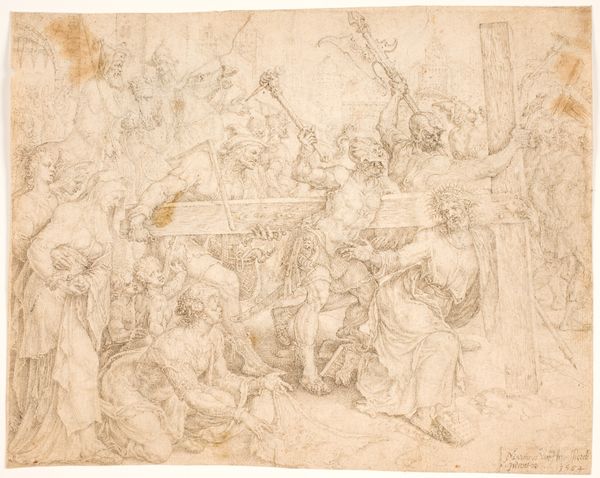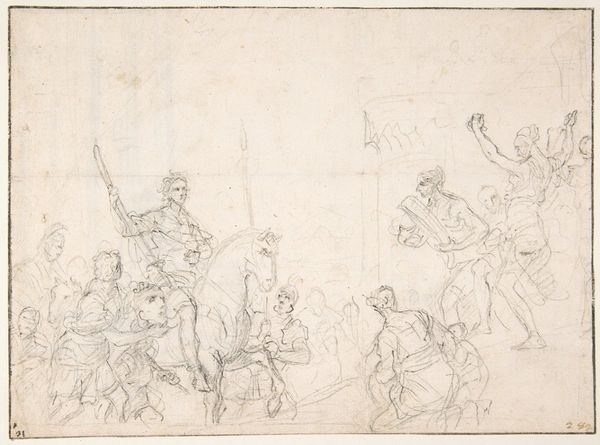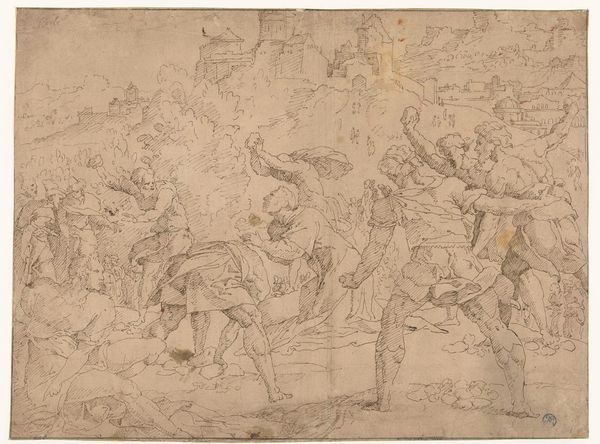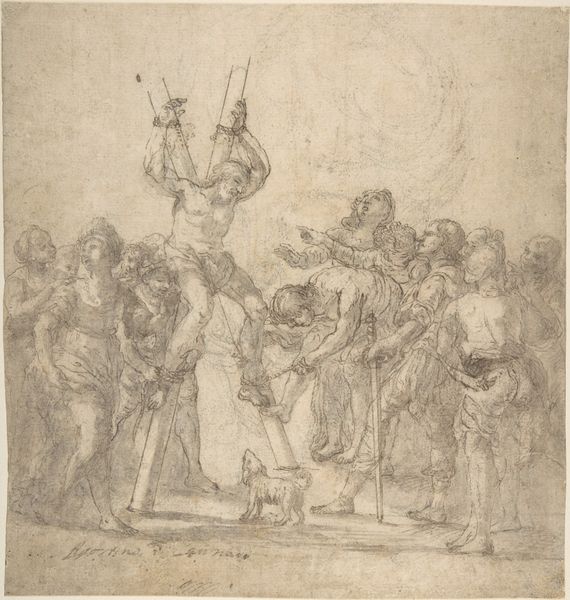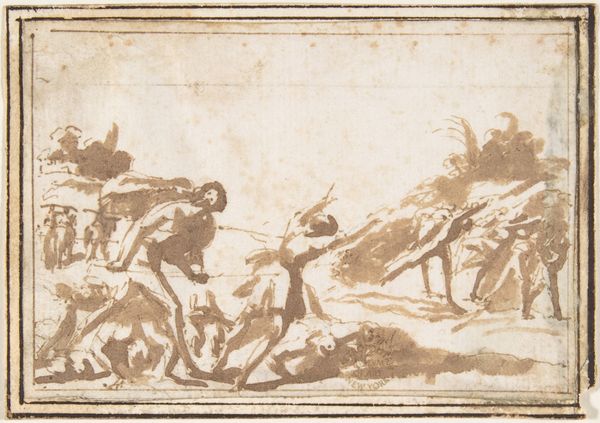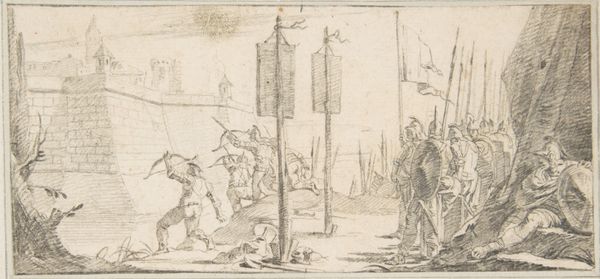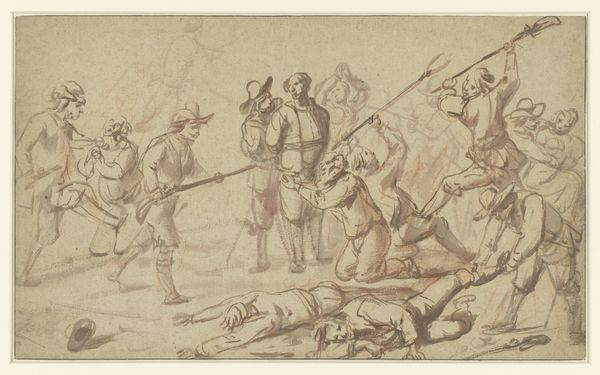
drawing, paper, ink
#
drawing
#
ink painting
#
figuration
#
paper
#
ink
#
history-painting
#
italian-renaissance
Dimensions: 3-3/4 x 5-5/16 in. (9.5 x 13.5 cm)
Copyright: Public Domain
Curator: Looking at this rather lively drawing, one can almost hear the clamor of the scene. This is "The Arrest of Christ," attributed to Francesco Allegrini and created sometime between 1624 and 1663. Editor: Yes, it’s a jumble. My immediate reaction is to the material simplicity: ink on paper. The frantic lines, the density of the figures… you feel the limited materials amplify the chaos. It suggests the scarcity of resources available to the artist, forcing them to rely solely on their skill and what they had at hand. Curator: Indeed. And consider where it is now: housed in the Metropolitan Museum of Art here in New York City. This drawing becomes a historical document, illustrating not only a biblical event but also the institutional forces that elevate such objects. What was likely a study or preparatory sketch is now a venerated artwork. Editor: The movement is striking. But what were the social conditions surrounding ink drawings? Were these affordable works of art meant for a broad audience or something else? Who commissioned such pieces and what was their intended use, historically? Curator: Allegrini, working during a turbulent period, had to balance commissions from religious institutions with those from wealthy private patrons. It likely reflects how art was produced and consumed within the societal frameworks of patronage, religious observance, and class. The church always demanded high output. Editor: Precisely! It’s not simply about religious piety but also economic drivers within artistic production. Did Allegrini engage assistants? Was this perhaps a rapid prototype, or something intended to show a patron a concept? We need to dive deeper into the means of its creation to fully understand its significance. Curator: From a purely historical view, “The Arrest of Christ” embodies a complex tapestry of religious, political, and personal narratives. It prompts questions about the artist’s position, his patrons' motivations, and the historical interpretations of Christ’s arrest. Editor: For me, the lasting question becomes this: how much did the labor put into the art-making define how those patrons consumed this piece? If its rapid strokes are due to speed as demanded by patronage or social causes, what kind of art would have appeared under more relaxed production schedules and fewer material concerns? Curator: I agree. Exploring this single artwork provides avenues to inquire about the relationship of its consumption. Thank you.
Comments
No comments
Be the first to comment and join the conversation on the ultimate creative platform.
